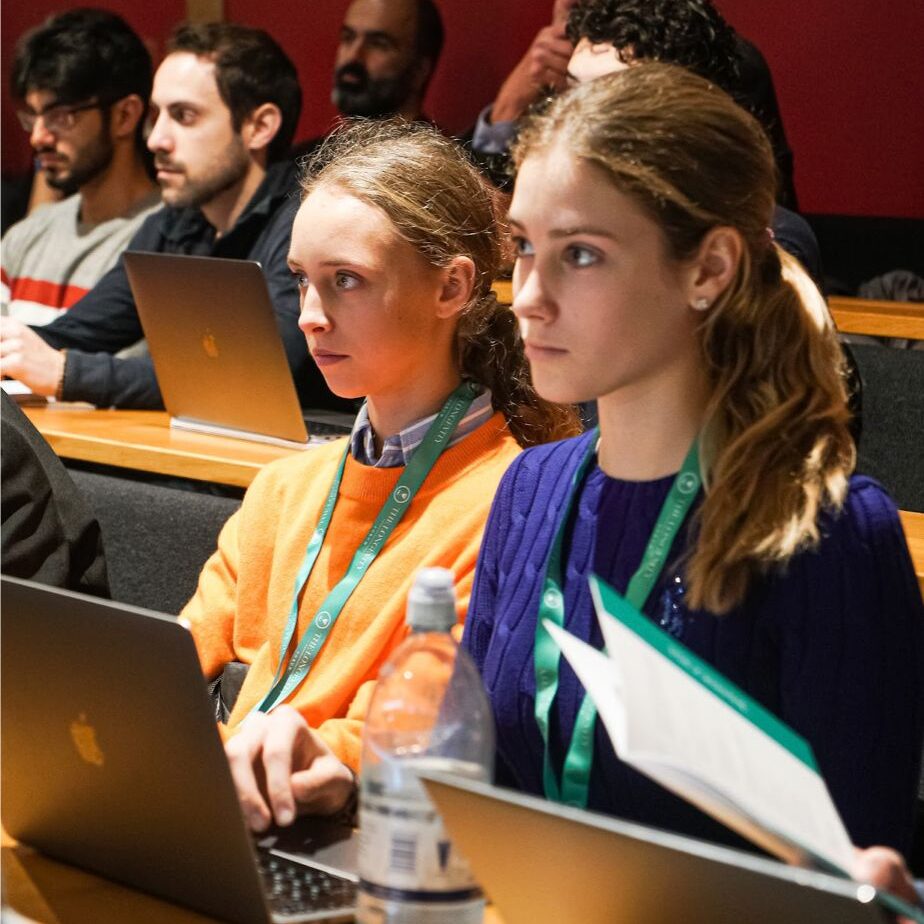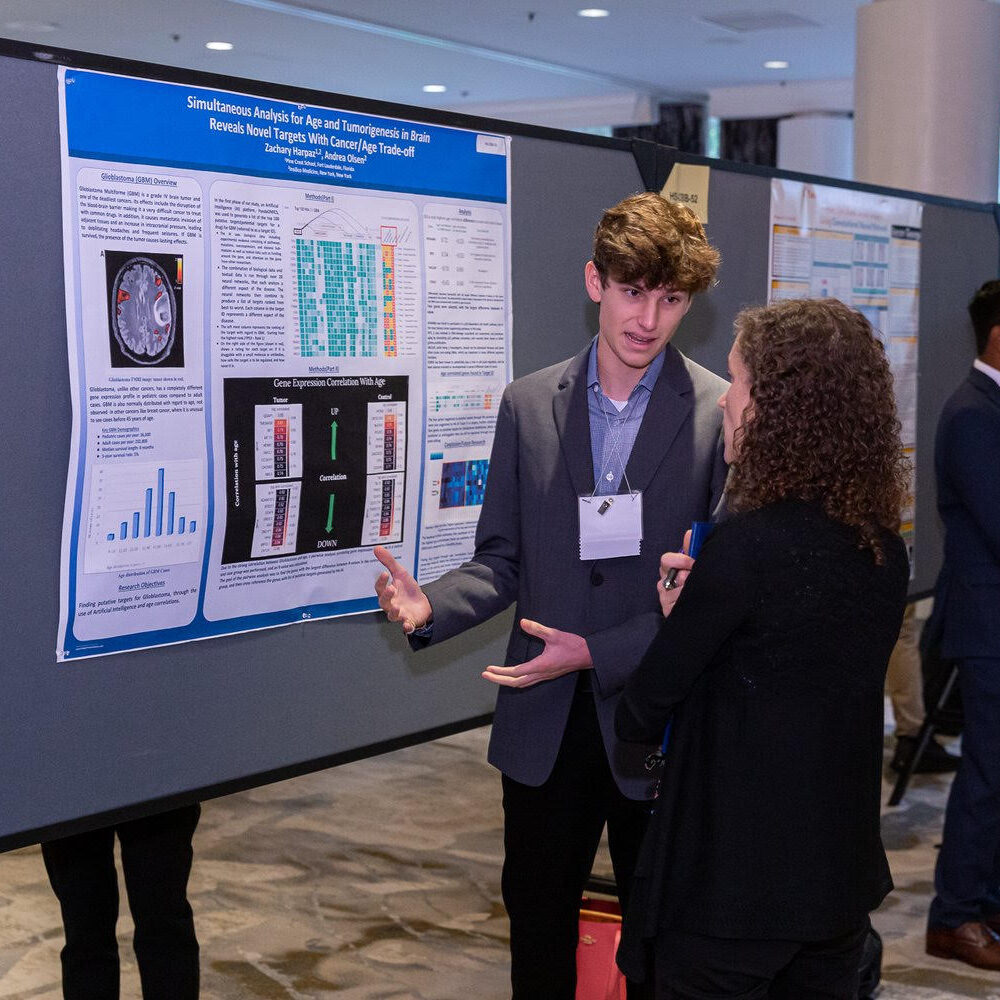In a breakthrough study, three high school students and Insilico researchers used generative artificial intelligence (AI) to help identify new therapeutic targets for glioblastoma multiforme (GBM) and aging.

Glioblastoma multiforme (GBM) is one of the most aggressive and fatal malignant brain tumors. With a median survival time of 15 months, only about 25% of patients survive for one year and less than 5% survive for five years. As people get older, the risk of developing GBM increases. The discovery of new drug targets for GBM is of paramount importance.
The good news here is that high school students, Zachary Harpaz, Andrea Olsen and Christopher Ren, and researchers Anastasia Shneyderman, Alexander Veviorskiy, Maria Dralkina, Simon Konnov, Olga Shcheglova, Frank W. Pun, Geoffrey Ho Duen Leung, Hoi Wing Leung, Ivan V. Ozerov, Alex Aliper, Mikhail Korzinkin, and Alex Zhavoronkov have recently made remarkable strides in the joint field of aging and glioblastoma research. The team used a generative artificial intelligence (AI) engine from Insilico Medicine (founded by Dr. Alex Zhavoronkov) called PandaOmics, to identify new therapeutic targets for both GBM and aging. On April 26, 2023, their research paper was published in Aging’s Volume 15, Issue 8, entitled, “Identification of dual-purpose therapeutic targets implicated in aging and glioblastoma multiforme using PandaOmics – an AI-enabled biological target discovery platform.”
Their Study

“[Glioblastoma multiforme] is one of the most horrible cancers because it has such a short survival time,” Andrea Olsen said. “Of course, it affects the brain and so affects the body because the brain is the control center of the entire body.”
Andrea Olsen, a student at Sevenoaks School in Kent, UK, and CEO/co-founder of The Youth Longevity Association, discovered her interest in neurobiology and technology while growing up in Oslo, Norway. In 2021, she started an internship at Insilico Medicine. Through her work with the researchers at Insilico Medicine, Olsen learned how to use AI to uncover new genetic targets that could be used to treat aging and cancer. Zachary Harpaz, a student at Pine Crest School in Fort Lauderdale, Florida, discovered his passion for biology after being introduced to the subject in 2020. He combined his passion for biology with his intrigue for computer science and AI to enter the field of aging research.

“We wanted to find new putative targets for glioblastoma as well as aging—attacking them both at the same time,” explained Harpaz.
The researchers used a comprehensive approach to identify their targets. They split their data into three categories—young, middle-aged and senior—and mapped the importance of gene expression to survival. They analyzed 12 datasets and selected the genes that were overlapped in 11 of the 12 datasets. They also cross-referenced those genes with a recent study conducted by the researchers at Insilico Medicine in 2022 on putative targets for aging and certain diseases.
PandaOmics
One of the most exciting aspects of their research was the use of PandaOmics. Typically, finding new drugs requires experts to comb through a myriad of data and conduct extensive research. With PandaOmics, AI quickly processes and analyzes the data to identify new therapeutic targets, reducing the time and resources required for drug development. These high school researchers used PandaOmics to screen datasets from the Gene Expression Omnibus repository (maintained by the National Center for Biotechnology Information) and discovered three new potential therapeutic targets for treating both aging and GBM.
The first target for glioblastoma and aging was CNGA3, which they selected after analyzing each gene through PandaOmics. They also analyzed negatively correlated genes and selected GLUD1 as the number one gene produced by PandaOmics. Finally, they cross-referenced genes highly correlated to aging with the previous 2022 study and selected SIRT1 as another potential therapeutic target. The students were excited by the findings. Before she interned with Insilico, Olsen said she didn’t realize that AI could be so helpful in finding completely new therapeutic targets.
“For me, [working with Insilico] was an incredible opportunity to dive into the field of research, aging, longevity, and neuroscience. It really kick-started my entire career,” Olsen said.
Looking Ahead
Overall, the study conducted by the researchers and these high school students showcases the power of AI in drug discovery and highlights the potential for young researchers to make meaningful contributions to the field. Their findings could lead to the development of new therapies for glioblastoma and aging-related diseases. Other therapeutics identified through Insilico’s Pharma.AI platform—specifically for idiopathic pulmonary fibrosis and COVID-19—have already advanced to human clinical trials.
“I’m excited to continue my research into college, but I’m super grateful for this opportunity at Insilico. It allowed me to get a head start on learning how to conduct research, analyze data and use the coolest and most cutting edge AI in the drug development area,” Harpaz said. “That experience gave me an amazing head start and I’m super excited to continue that into college, and even after college.”
Click here to read the full research paper published by Aging.
AGING (AGING-US) VIDEOS: YouTube | LabTube | Aging-US.com
—
Aging is an open-access, peer-reviewed journal that has been publishing high-impact papers in all fields of aging research since 2009. These papers are available to readers (at no cost and free of subscription barriers) in bi-monthly issues at Aging-US.com.
Click here to subscribe to Aging publication updates.
For media inquiries, please contact [email protected].